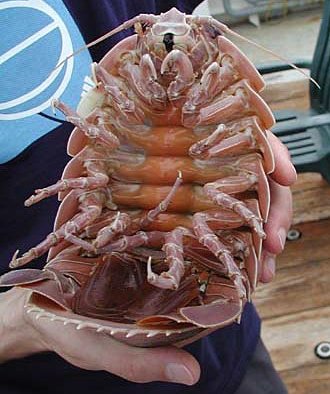341014-pillbug.jpg

Underside of a giant isopod, a relative of Tylos. Credit: National Oceanic and Atmospheric Administration
Some relatives of pill bugs have colonized tropical beaches around the world. Yet they don’t get around much — they don’t swim or float in the water. Instead, they may have relied on the motions of the land itself to spread them around the globe.These critters form a group of small crustaceans known as Tylos. They look like light-colored pill bugs, with a tough “shell,” known as an exoskeleton, for protection.
Although they live on land, they stay close to the ocean. They’re found just above the high-tide line, where they burrow into the sand and mud, or under rocks or piles of seaweed. They’re a common sight on beaches from Australia to the Caribbean.
Yet a recent study found that the groups of Tylos in different regions are genetically quite different from each other. They don’t do a lot of traveling on their own. Their young don’t float with the currents as many marine organisms do, and the adults don’t swim. Juveniles can roll up like pill bugs, so they may surf along the waves, but not very far.
The study suggests that in large part, the little creatures let Earth’s crust do the work of spreading them out. The continents float on thin plates that move around, changing configurations over millions of years. Tylos also may have moved when changes in climate lowered sea level, creating “bridges” between chunks of land. And each group may have spread within its own region by catching rides on seaweed or other debris — helping these beach-dwelling “roly-polies” spread around the world.
This episode of Science and the Sea is made possible by Texas Sea Grant

